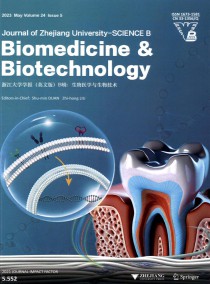
Journal of Zhejiang University Science B杂志 SCI期刊 CSCD期刊 统计源期刊
主管单位:中华人民共和国教育部 主办单位:浙江大学
月刊 审稿周期:1-3个月 全年订价:¥480.00
《Journal of Zhejiang University Science B》由Helen (Yuehong) Zhang担任主编,创刊于2005年,由中华人民共和国教育部主管、浙江大学主办的一本生物领域专业期刊。主要刊载该领域内的原创性研究论文、综述和评论等,力求及时、准确、全面的反映该领域的政策、技术、应用市场及动态。
- 33-1356/Q 国内刊号
- 1673-1581 国际刊号
- 1360 发文量
- 1.3 影响因子
- 8128 总被引量
- 32-322 邮发代号
- 2005 创刊时间
Journal of Zhejiang University Science B杂志介绍
《Journal of Zhejiang University Science B》是中华人民共和国教育部主管、浙江大学主办的生物类学术期刊,该刊所发表的论文所涉及的学科领域主要有医药卫生、生物学、农业科学、文化科学医药卫生 / 临床医学、医药卫生 / 内科学、医药卫生 / 肿瘤、农业科学 / 畜牧兽医。该刊于2005年创刊,本刊为月刊。主要报道生物行业相关领域研究成果与实践。该期刊的创办有利于加强生物研究领域的学术交流,本刊将及时推出该领域的科研成果,使国内外同行能及时、方便地查阅、引用,为生物行业领域的发展做贡献。该杂志得到了广大作者、读者和外审专家的关心、支持和帮助 ,赢得了学术界认可和好评。《Journal of Zhejiang University Science B》主要设有科学快报、研究论文、综述等栏目。以广大的生物工作者为服务对象,是广大生物工作者发表专业论文和学习的学术平台。
Journal of Zhejiang University Science B期刊荣誉
Journal of Zhejiang University Science B投稿须知
1、All materials must adhere to high ethical and animal welfare standards. Any use of animals must be based on ethological knowledge and respect for species- specific requirements for health and well-being. For investigations of human subjects, an appropriate institutional review board approved the project and the informed consent was obtained from the study participants.
2、Preview
Preview, also known as "Communication" or "Letter", is to rapidly and concisely present a preliminary study, which has innovative research findings or a novel idea, but might be less substantial than a full research article. Previews should have no more than 2000 words (excluding references and figure legends) and 2 display items (figures and/or tables). There is no ab-stract, but the opening paragraph should provide enough information to attract reader's attention and allow them to understand the study. Previews may be commissioned or unsolicited submissions, and will be peer-reviewed and published as a high priority.
3、Perspective
Perspective is to give an opinion on virtually any important popular topic. We welcome a personal viewpoint on new advances or giving fresh insights. Viewpoints should be well focused, scholarly, and clearly presented. Maximum length is up to 2000 words (excluding references and figure legends), with 2 display items (figures and/or tables). There is no abstract, but the opening paragraph should provide your readers with sufficient information. Perspectives may be commissioned or unsolicited submissions, and will be peer-reviewed and published as a high priority.
4、Article
Article is a substantial novel research study. It is written by the researchers who actually conducted the study and reviewed by international peer scholars. The researchers describe the research question and the purpose of the study in the Introduction, detail their methods in Materials and Methods, report the findings in Results, and interpret the results and implications in Discussion, followed by genuine conclusions, which are not just a repeat of the abstract or summary of results. A structured abstract should have 150-300 words. An article may have up to 10 display items (figures and/or tables). Conciseness is encouraged, while currently there is no length limit on a research article. Additional related materials, if necessary, may be provided as electronic supplementary materials. Authors are required to provide a competing financial interests, ethics, and author contributions statement.
5、Review or Mini-review
Review or Mini-review should be authoritative and of high interest. A review normally has some 5000 words, while some 3000 words are required for a mini-review, excluding references and figure legends. Display items (figures and/or tables) are welcomed. An abstract should have 100-200 words. Authors are required to provide a competing financial interests statement. Leading researchers are encouraged to write high-quality reviews in their fields. Reviews may be commissioned or unsolicited submissions and are reviewed by international peer scholars.
6、Correspondence
Correspondence, also known as "Letter to the Editor", covers a wide variety of contents, which are too brief to be published as abovementioned article categories. The authors can provide rapid and concise report of important findings, discuss controversial and interdisciplinary topics or any other issues of interest, or give some comments on papers previously published. It is limited to 1500 words and 15 references. Only 1-2 display items (figures and/or tables) are allowed. There is no abstract or any subsections; nevertheless, the opening paragraph should present concise but yet sufficient information to give the reader a basic overview. Additional related materials, if necessary, may be provided as electronic supplementary materials. Correspondence will be reviewed by Editorial Board members and published as a high priority.
7、Editorial
Editorial is written by members of the editorial board of JZUS-B, the journal editors, guest editor(s) of a special issue, or invited distinguished scholars. Editorials are meant to influence public opinion, promote critical thinking, and sometimes cause people to take action on an issue.
8、Paper Format Requirements
The electronic manuscript should be prepared to accord with the following:
(1)Title and by-line:
Name, affiliation (institution) of the author(s), city, zip code, country, and email address of the author(s) should be given.
(2)Abstract:
About 150–250 words should outline the objective, method, main results, and conclusion without mathematical, equations, or cited marks.
(3)Key words:
Provide 3 to 6 key words or phrases for cross-indexing this article.
(4)Text:
The text should contain an Introduction that puts the paper into proper perspective for the reader, and should also contain Methods, Results, Discussion, and Conclusion sections.
(5)Acknowledgements:
Individuals or units other than authors who were of direct help in the work should be acknowledged by a brief statement following the text.
(6)References & Citation:
Personal communications and unpublished data are not acceptable references. Periodicals should be referred to in the Author-Data order: name of author(s), year, title of paper, name of periodical (in italics), Vol.(No.): pages, [DOI]. Books should be referred to in the order: name of author(s), year of publication, title of book, publishing house, city, pages. All authors in the references should be listed. The citation form of the author-date in the text consists of the author?s last (family) name. a comma, and the year of publication of the work.
(7)Text citation examples:
One author: (Vandermeer, 1990)
Two authors: (Sun and Wang, 2000; Cao and Xu, 2001)
Three or more authors: (Moons et al., 1997; Schlag et al., 2000a; 2000b)
(8)Reference list examples:
①For journal articles
Hengartner, M.G., 2000. The biochemistry of apoptosis. Nature, 407(6805):770-775. [doi:10.1038/35037710]
Schroder, W.J., Zerge, J.A., Lorensen, W.E., 1992. Decimation of triangle meshes. ACM SIGGRAPH Computer Graphics, 26(2):65-70. [doi:10.1145/142920.134010]
②For proceedings
Gorini, S., Quirini, M., Menciassi, A., Permorio, G., Stefanini, C., Dario, P., 2006. A Novel SMA-based Actuator for a Legged Endoscopic Capsule. First IEEE/RAS-EMBS International Conference on Biomedical Robotics and Biomechatronics, Pisa, Italy. IEEE, Piscataway, USA, p.443-449. [doi:10.1109/BIOROB.2006.1639128]
③For whole books/monographs or chapters in edited books
Gregersen, H., 2006. Biomechanics of the Gastrointestinal Tract. People's Medical Publishing House, Beijing, China, p.216-236 (in Chinese).
Prigogine, I., 1976. Order through Fluctuation: Self-organization and Social System. In: Jantsch, E., Waddington, C. (Eds.), Evolution and Consciousness: Human Systems in Transition. Addison-Wesley, London, p.93-134.
④For theses
Rizvi, U.H., 2006. Combined Multiple Transmit Antennas and Multi-level Modulation Techniques. MS Thesis, Royal Institute of Technology, Stockholm, Sweden.
⑤For reports
Sweeney, L., 2000. Uniqueness of Simple Demographics in the U.S. Population. Technical Report No. LIDAP-WP4, Laboratory for International Data Privacy, Carnegie Mellon University, PA.
9、Figures & Tables:
Figures must be placed in the text and have their captions for each one, thus Fig. 1a, Fig. 1b, etc. (There will be an extra charge for those graphics considered for publication in color. Authors are expected to use different line types to distinguish the different parts of a figure that they do not want to have published in color).
All tables must be mentioned in the text in consecutive order and must be numbered with Arabic numbers.
Journal of Zhejiang University Science B期刊评价分析
年发文量和被引次数
影响因子和立即指数
Journal of Zhejiang University Science B同类期刊
-
Journal of Energy Chemistry
主办:中国科学院大连化学物理研究所;中国科学院成都有机化学研究所
¥ 696
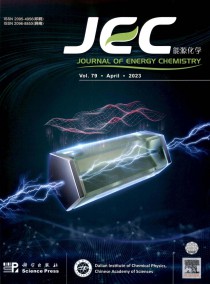
-
International Journal of Sediment Research
主办:国际泥沙研究培训中心
¥ 355.2
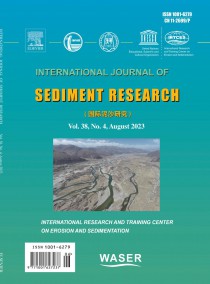
-
Journal of Mountain Science
主办:中国科学院成都山地灾害与环境研究所
¥ 420
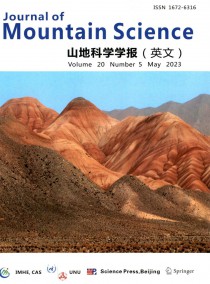
-
Journal of Systems Science and Systems Engineering
主办:中国系统工程学会
¥ 504
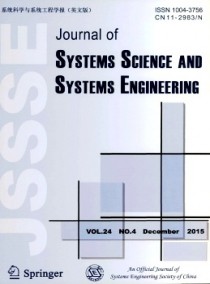
-
International Journal of Automation Computing
主办:中国科学院自动化所
¥ 696
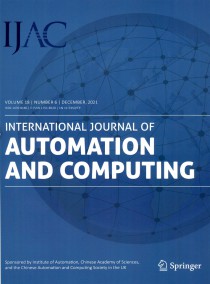
-
Journal of Earth Science
主办:中国地质大学
¥ 456
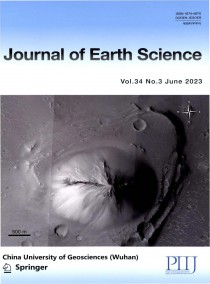
-
Journal of Iron and Steel Research
主办:钢铁研究总院
¥ 1560
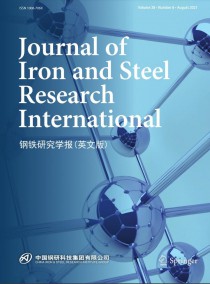
-
Journal of Meteorological Research
主办:中国气象学会
¥ 480
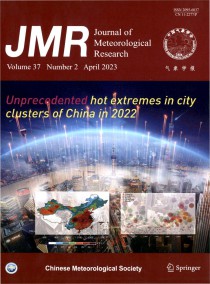
免责声明
若用户需要出版服务,请联系出版商,地址:38 Zheda Road, Hangzhou 310027, China,邮编:310027。